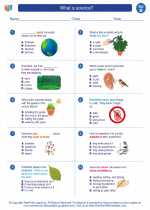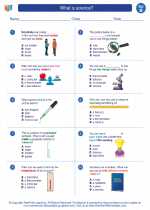State of Matter
The state of matter refers to the physical form in which a substance exists, such as solid, liquid, or gas. Understanding the different states of matter is important in science and everyday life.
Three States of Matter
Solid: In the solid state, particles are closely packed together and vibrate in place. Solids have a fixed shape and volume. Examples include ice, wood, and metal.
Liquid: In the liquid state, particles are still close together but can move past each other. Liquids have a definite volume but take the shape of their container. Water, milk, and oil are examples of liquids.
Gas: In the gas state, particles are spread out and move freely. Gases have neither a fixed shape nor volume and expand to fill their container. Examples of gases include air, oxygen, and carbon dioxide.
Changes in State
Substances can change from one state to another through processes such as melting, freezing, evaporation, condensation, and sublimation. These changes are reversible and involve the gain or loss of energy.
Plasma
Plasma: Plasma is a state of matter similar to gas but consists of positively and negatively charged particles. It is often found in stars, lightning, and fluorescent lights.
Study Tips
- Review the characteristics of each state of matter.
- Practice identifying examples of each state of matter in your surroundings.
- Understand the changes in state and the energy involved in each process.
- Explore the unique properties of plasma and its occurrence in nature.
[State Of Matter] Related Worksheets and Study Guides:
.◂Science Worksheets and Study Guides Second Grade. What is science?

 Worksheet/Answer key
Worksheet/Answer key
 Worksheet/Answer key
Worksheet/Answer key
 Worksheet/Answer key
Worksheet/Answer key
 Vocabulary/Answer key
Vocabulary/Answer key
